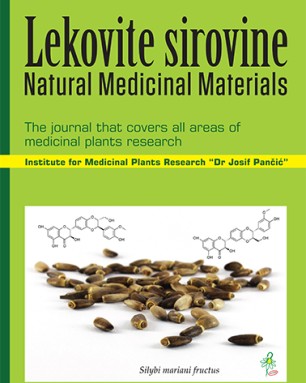Institute for Medicinal Plant Research “Dr. Josif Pančić” , Belgrade , Serbia
Institute of Molecular Genetics and Genetic Engineering, University of Belgrade , Belgrade , Serbia
Institute for Medicinal Plant Research “Dr. Josif Pančić” , Belgrade , Serbia
Faculty of Agriculture, University of Belgrade , Belgrade , Serbia
Institute of Meat Hygiene and Technology , Belgrade , Serbia
Faculty of Agriculture, University of Belgrade , Belgrade , Serbia
Institute for Medicinal Plant Research “Dr. Josif Pančić” , Belgrade , Serbia
Institute for Medicinal Plant Research “Dr. Josif Pančić” , Belgrade , Serbia
Due to its high content of phenolics, black chokeberry has been proposed as a health-promoting material, especially use of chokeberry extract as a food or pharmaceuticals. Chokeberry extract was spray-dried using gum Arabic as a carrier. The optimal conditions for the efficient microencapsulation of chokeberry extract using spray-drying technique have been investigated. The aim of our study was to obtain microparticles with the best potential to improve functionality and stability of extracted chokeberry polyphenols, and to investigate the possibility of microbeads to protect active compounds during simulated digestion process. Morphological characteristics of microbeads were analyzed using FTIR and SEM techniques. Zeta potential, particle size and moisture content were determined. Released total phenolics and total anthocyanins content as well as concentration of individual anthocyanins were quantified before and after digestion process. Microparticles exhibited high encapsulation efficiency up to 87%, and high content of released polyphenols was achieved. After in vitro simulated digestion phenolic compounds decreased by 11-24%, exhibited higher protective effect of gum Arabic. Our results showed that chokeberry microparticles obtained by spray drying method could be useful supplements or functional food.
This is an open access article distributed under the Creative Commons Attribution License which permits unrestricted use, distribution, and reproduction in any medium, provided the original work is properly cited.

The statements, opinions and data contained in the journal are solely those of the individual authors and contributors and not of the publisher and the editor(s). We stay neutral with regard to jurisdictional claims in published maps and institutional affiliations.